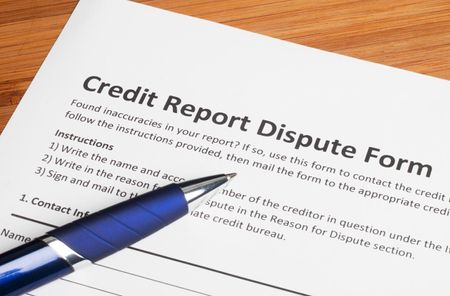4 Ways to Save Money on Life Insurance
Don't let tough economic times prompt you to go without coverage.

I lost my job and can’t afford to pay my life-insurance premiums. I don’t want to drop the policy, but I need to find a way to lower the cost. What should I do?
A lot of people have been struggling with the same choice, and many have dropped their life insurance, which can be a big mistake. Life-insurance ownership is at a 50-year low, according to a new study by LIMRA, a financial-services research firm. Thirty percent of U.S households have no life-insurance coverage, compared with 22% without insurance in 2004, the last time the LIMRA conducted the study. Not everyone needs life insurance, of course -- it’s not necessary if nobody depends on you financially. But the study found that 11 million households with children younger than 18 have no life insurance, even though that’s generally the most important time to have the coverage.
Paying the premiums during tough economic times can be challenging. But a shaky economy is all the more reason to have at least some life insurance if you’re supporting a family. If anything were to happen to you, it would become even more difficult for your family to pay the bills. And people who have coverage only through work would lose their life insurance if they lost their jobs -- a good reason to have some coverage on your own.

Sign up for Kiplinger’s Free E-Newsletters
Profit and prosper with the best of expert advice on investing, taxes, retirement, personal finance and more - straight to your e-mail.
Profit and prosper with the best of expert advice - straight to your e-mail.
The good news is that life-insurance rates have been dropping for the past decade, so it may cost a lot less than expected to keep some coverage. Here are four ways to make the insurance more affordable.
1. Calculate how much coverage you really need. Some insurance-industry calculators tend to overestimate insurance needs, which can cause people to buy coverage they can’t afford or prevent them from buying any coverage at all. See How Much Life Insurance Do You Need? for help figuring out how much coverage to get and to see where you can find some wiggle room (for example, you may not need enough insurance to pay off your mortgage in full, especially if you have a low-interest fixed-rate mortgage).
2. Shop for a lower rate. Life-insurance rates have plummeted over the past decade, and you may be able to find a less-expensive policy now even though you’re older -- especially if you didn’t do a thorough shopping job when you first bought your policy. A healthy 30-year-old man can buy a $250,000 term insurance policy for as little $154 per year and lock in that annual rate for 20 years, according to a recent survey by Life Quotes; a woman could pay just $142. Even though rates are higher if you buy a policy when you’re older, they may still be quite affordable. A healthy 45-year-old man could get a 20-year, $250,000 policy for just $338 per year ($272 for a woman), according to Life Quotes. Prices vary a lot by company. After reducing premiums for nearly a decade, some insurers started to raise rates over the past 24 months. But rates from some companies remain at all-time lows -- at least for now, says Bob Bland, chief executive of Life Quotes. You can get quotes from dozens of insurers at www.lifequotes.com or www.accuquote.com. Also see Get the Best Rate on Life Insurance.
3. Pay annually rather than monthly. A healthy 35-year-old man can get a $250,000, 20-year term policy for just $14.44 per month. The same policy costs $165 if premiums are paid annually versus $173 when you add up the monthly premiums, according to AccuQuote.com. The cost savings will be more pronounced if you buy a larger policy.
4. Cut premiums with term insurance. There are two kinds of life insurance: term and permanent. Term insurance provides a set amount of life insurance at a fixed rate for a certain period -- often 20 or 30 years. Permanent insurance, such as whole life and universal life, never expires as long as you pay premiums, and it builds cash value that you can eventually withdraw or borrow. But the annual premiums for permanent insurance tend to be a lot more than they are for term insurance, especially in the early years. Some people who want permanent insurance end up buying a lot less coverage than they need because that’s all they can afford. That’s a big mistake.
Instead, you can start with less-expensive term insurance and buy the right amount of coverage to protect your family. Term insurance is the only type that many families need. But if you eventually want to have permanent insurance -- if, for example, you need coverage for longer than 20 or 30 years -- you can buy a convertible policy that lets you gradually shift from term to permanent as your income grows and you can afford the higher premiums. See Term vs. Permanent Insurance: Get the Best of Both for more information.
Get Kiplinger Today newsletter — free
Profit and prosper with the best of Kiplinger's advice on investing, taxes, retirement, personal finance and much more. Delivered daily. Enter your email in the box and click Sign Me Up.

As the "Ask Kim" columnist for Kiplinger's Personal Finance, Lankford receives hundreds of personal finance questions from readers every month. She is the author of Rescue Your Financial Life (McGraw-Hill, 2003), The Insurance Maze: How You Can Save Money on Insurance -- and Still Get the Coverage You Need (Kaplan, 2006), Kiplinger's Ask Kim for Money Smart Solutions (Kaplan, 2007) and The Kiplinger/BBB Personal Finance Guide for Military Families. She is frequently featured as a financial expert on television and radio, including NBC's Today Show, CNN, CNBC and National Public Radio.
-
 Reduce Your Retirement Tax Risk With the Three-Bucket Strategy
Reduce Your Retirement Tax Risk With the Three-Bucket StrategySplitting retirement funds into three buckets with distinct tax treatments can help you avoid a nasty tax bill down the line. Here's how the strategy works.
By Bryan S. Slovon, Investment Adviser Published
-
 Social Security Phone Wait Times: What to Expect and the Best Times to Call
Social Security Phone Wait Times: What to Expect and the Best Times to CallThe Social Security Administration receives 80 million calls every year. Timing is everything if you want to get through.
By Donna LeValley Published
-
 Credit Report Error? They All Matter
Credit Report Error? They All Mattercredit & debt Don't dismiss a minor error. It could be the sign of something more serious.
By Kimberly Lankford Published
-
 Insurance for a Learning Driver
Insurance for a Learning Driverinsurance Adding a teen driver to your plan will raise premiums, but there are things you can do to help reduce them.
By Kimberly Lankford Published
-
 529 Plans Aren’t Just for Kids
529 Plans Aren’t Just for Kids529 Plans You don’t have to be college-age to use the money tax-free, but there are stipulations.
By Kimberly Lankford Published
-
 When to Transfer Ownership of a Custodial Account
When to Transfer Ownership of a Custodial Accountsavings Before your child turns 18, you should check with your broker about the account's age of majority and termination.
By Kimberly Lankford Published
-
 Borrowers Get More Time to Repay 401(k) Loans
Borrowers Get More Time to Repay 401(k) Loansretirement If you leave your job while you have an outstanding 401(k) loan, Uncle Sam now gives you extra time to repay it -- thanks to the new tax law.
By Kimberly Lankford Published
-
 When It Pays to Buy Travel Insurance
When It Pays to Buy Travel InsuranceTravel Investing in travel insurance can help recover some costs when your vacation gets ruined by a natural disaster, medical emergency or other catastrophe.
By Kimberly Lankford Published
-
 What Travel Insurance Covers When Planes Are Grounded
What Travel Insurance Covers When Planes Are GroundedTravel Your travel insurance might help with some costs if your trip was delayed because of the recent grounding of Boeing 737 Max planes.
By Kimberly Lankford Published
-
 Ways to Spend Your Flexible Spending Account Money by March 15 Deadline
Ways to Spend Your Flexible Spending Account Money by March 15 Deadlinespending Many workers will be hitting the drugstore in the next few days to use up leftover flexible spending account money from 2018 so they don’t lose it.
By Kimberly Lankford Published